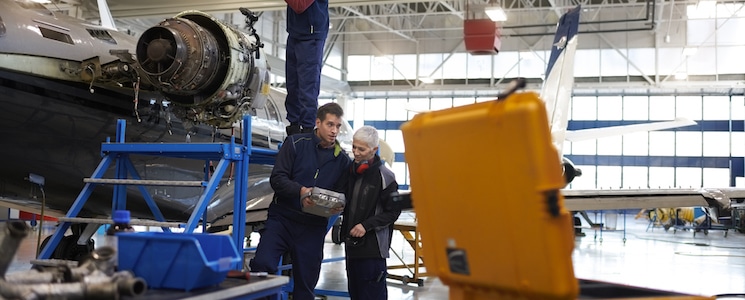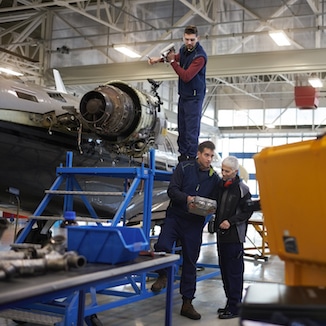
Every year, Oliver Wyman conducts an MRO survey to take the pulse of the maintenance, repair and overhaul (MRO) sector. Nearly 100 aviation professionals from around the world, representing every niche, are included. According to these airline operators, captive airline MROs, independents, OEMs, leasers, financiers, parts distributors and consultants, aftermarket disruption claims the top two spots as the biggest challenges within MRO with technology advancement and labor shortages following shortly after. This blog will discuss these prominent industry challenges and outline their possibilities for long-term influence.
OEM’s Heighten the Challenge of MRO Aftermarket Disruption
Top of the mind to this major challenge is the ramp up of OEMs in the aftermarket. 60% of respondents from the Oliver Wyman survey expressed concerns about their growing presence and they have become a threat to the MRO industry. For many years, engine, component and aircraft manufacturers were content with providing products to the industry, with product manufacturing as their main priority. At the time, OEMs co-existed with and relied upon a thriving aftermarket ecosystem. However, the culture has changed due to the impact of changes in product sales and tightening budgets.
As an example of the OEM aftermarket presence expansion, in 2016, Boeing sent shockwaves through the industry by trumpeting a goal to triple its aftermarket sales. This would increase their figures to $50 billion within the next ten years. To do this, they established a new division by bringing together the civil and military MRO services. This not only raised Boeing’s profile, but also signaled the growing importance of the aftermarket to the industry at large.
Aftermarket Disruption Leads to MRO Industry Changes
Other OEMs quickly followed suit, announcing ambitious plans for aftermarket success. Many companies began to see ever-lower margins on equipment, components and systems and began to make significant changes as a result of an analysis of the future of sales and profitability. This created a major shift in direction for the aftermarket industry. OEMs have begun to increase their profitability by offering expanded services, such as all-inclusive care packages, for the aftermarket, bringing them head to head with traditional aftermarket specialists. Every contract and order will be fought over.
Industry consolidation has taken the forefront in response to these changes within the MRO aftermarket. In light of heavy competition from OEMs with deep pockets, mergers and acquisitions have multiplied, causing industry executives to name OEM involvement as the second highest disruptive influence at 55%, a full 26 percentage points higher than surveys from previous years. Many see the establishment of larger and stronger aftermarket specialists as the best way to counter the OEM invasion, it’s likely that more consolidation lies in the future.
Other Significant MRO Challenges
The Oliver Wyman MRO survey also highlighted some additional trends to be watched out for. A wave of innovation is sweeping across the MRO sector: the rise of digitization, the Internet of Things (IOT), machine learning, artificial intelligence (AI), machine learning, predictive analytics and additive manufacturing (AM) to name a few. Technological advancement moved up from fourth to third place standing, increasing by 10% as a disruptive influence just this year. With so much recent technological advancement, many expected this category to rise to the top of the survey. However, the digital transformation may have been a major factor in driving both OEM aftermarket growth and consolidation, generating its own disruptive influence. The price of entry into many of these new technologies is steep. It takes heavy investment to establish a infrastructure robust enough to integrate these systems securely and productively.
The labor shortage coupled with rising material and labor costs also scored high in the Oliver Wyman annual MRO survey. A shortage of mechanics has become a real problem, by driving up labor costs. A number of companies will compete for just a small supply of resources. Those that fail to attract the right talent can fall behind. With the skills needs for advanced technology being largely absent from within the ranks of many MRO specialists, this area promises to become a battleground in the years ahead. While these factors represent serious risk to MRO providers, they also present major opportunities for those in MRO that institute the right policies and implement the right actions. To compete, companies must become more efficient and adopt the latest technologies.
iBase-t Solumina can help manufacturers streamline work processes, heighten profitability and accelerate their digital transformation.


